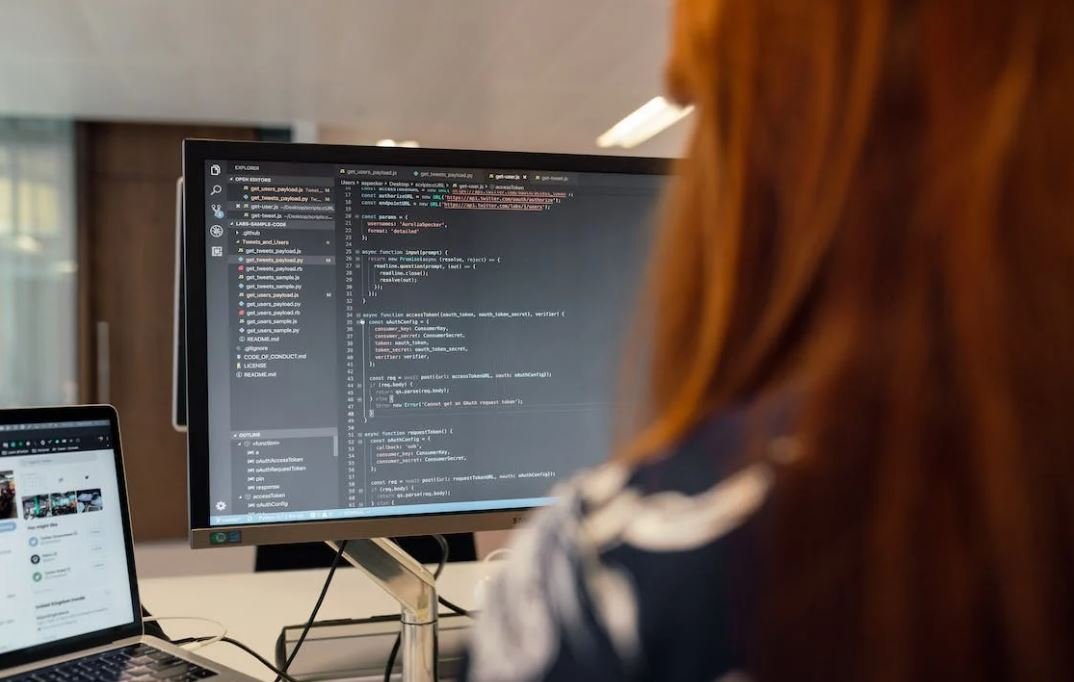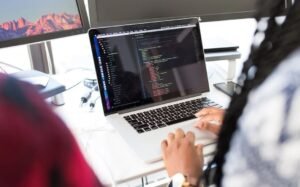Artificial Intelligence Copyright
Artificial Intelligence (AI) is revolutionizing industries across the globe. From healthcare to finance, education to entertainment, AI systems are transforming the way we live and work. However, as AI becomes more sophisticated and capable of creating original works, the question of AI copyright arises.
Key Takeaways
- Artificial Intelligence is raising questions about the ownership and protection of its creations.
- AI-generated works may qualify for copyright protection if they meet the requirements of originality and human authorship.
- Legal frameworks and policies need to be adapted to address AI copyright issues.
AI-generated works, such as paintings, music compositions, and even news articles, have sparked debates about who owns and has the right to profit from these creations. Currently, copyright laws primarily grant protection to works created by human authors. However, as AI becomes more capable of autonomously producing creative works, it challenges the traditional concept of authorship and raises the need to redefine the scope of copyright.
**One interesting aspect of AI-generated works is that they blur the line between human and machine authorship.** While AI systems can analyze vast amounts of data and generate novel outputs, they lack the human creativity and intent traditionally associated with copyright protection. This raises unique legal and ethical considerations in determining the ownership and rights surrounding AI-generated works.
An Evolving Legal Landscape
As the capabilities of AI systems continue to grow, lawmakers and legal scholars are grappling with the urgent need to adapt existing copyright laws or create new regulations to protect AI-generated works. Many argue that AI itself should be recognized as the author and owner of the creations it generates, whereas others advocate for granting copyright protection to the human developers or organizations behind the AI systems.
**In the United States, the Copyright Office has released a statement clarifying that works produced by non-human authors are not eligible for copyright protection.** This indicates the current stance on AI copyright, but as AI technology advances, debates and legal adjustments are expected to follow.
The Need for Clear Guidelines
To address the challenges surrounding AI copyright, clear guidelines and frameworks need to be established. These guidelines should consider factors like the level of human involvement in the creation process, the degree of AI autonomy, and the potential impact on existing copyright laws.
**One possible approach is to adopt a hybrid model acknowledging both the AI system and its human developers as joint authors, sharing copyright and royalties.** This model would recognize the contributions of both human ingenuity and machine capabilities, while ensuring incentives for continued AI innovation.
The Future of AI Copyright
As technology advances, AI systems will continue to push the boundaries of creative output. **The intersection between AI and copyright law will remain a subject of ongoing discussion and legal adaptation.** It is crucial for policymakers, legal experts, and AI researchers to collaborate and establish a balanced framework that protects the rights of creators while promoting innovation and public access to AI-generated content.

Common Misconceptions
Artificial Intelligence (AI) is Smarter Than Humans
One common misconception about AI is that it is inherently smarter than humans. While AI systems can perform specific tasks with extraordinary accuracy and speed, they lack the general intelligence and ability to understand and reason about the world in the same way humans do.
- AI systems are specialized and designed for specific tasks.
- AI lacks human-like intuition and empathy.
- AI cannot replace the creativity and innovation of human intelligence.
AI Will Take Over All Jobs
Another misconception is the fear that AI will render humans obsolete in the workforce. While AI has the potential to automate certain tasks and job roles, it is unlikely to completely replace human jobs. Instead, AI is more likely to augment human capabilities and enhance efficiency in various industries.
- AI is better suited for repetitive and mundane tasks.
- AI can create new job opportunities in managing and developing AI systems.
- AI can empower humans to focus on more complex and creative aspects of their work.
AI is a Black Box with Unknown Decision-Making
Many people believe that AI operates as a black box, making decisions without any logical or understandable reasoning. However, this is not entirely accurate. While some AI algorithms are complex and difficult to interpret, there are efforts to make AI decision-making more transparent and accountable.
- Explainable AI (XAI) aims to provide transparency and interpretability.
- AI systems can be designed to provide justifications for their decisions.
- Ethical AI frameworks promote responsible and understandable AI development.
AI Will Destroy Humanity
A popular misconception perpetuated by science fiction is the notion that AI will lead to the destruction of humanity. While it is important to acknowledge the potential risks and challenges associated with AI development, many experts argue that with proper regulation and ethical considerations, AI can be harnessed for the benefit of society.
- Developing AI with built-in safety mechanisms and ethical frameworks can mitigate risks.
- AI has the potential to solve complex global challenges, such as climate change and healthcare.
- Society can shape the development and deployment of AI through responsible AI governance.
AI is Independent and Autonomous
Contrary to popular belief, AI is not inherently independent or autonomous. AI systems rely on human input and guidance for training, data labeling, and fine-tuning. Without human intervention, AI algorithms cannot function effectively or make informed decisions.
- Human input is crucial for teaching AI models and correcting biases.
- AI algorithms require continuous monitoring and maintenance by human experts.
- Human oversight is essential to ensure AI is aligned with ethical and legal standards.

Introduction
In the rapidly advancing field of artificial intelligence (AI), questions about copyright have started to arise. As AI systems become more advanced, capable of creating original works, the issue of who owns the copyright to these creations becomes more complex. This article discusses various aspects of AI copyright and presents factual information and data through the tables below.
Table 1: Global AI Patent Applications
In recent years, the number of patent applications related to AI has skyrocketed globally. This table showcases the top five countries with the highest number of AI patent applications.
| Rank | Country | Number of Patent Applications |
|---|---|---|
| 1 | China | 18,120 |
| 2 | United States | 15,944 |
| 3 | South Korea | 14,017 |
| 4 | Japan | 10,602 |
| 5 | Germany | 7,544 |
Table 2: AI-Generated Artwork Sold at Auction
The art market has witnessed the emergence of AI-generated artwork, which has increasingly attracted significant attention and high bids at auctions. Here are some notable sales of AI-created artworks.
| Artwork | Sale Price | Date |
|---|---|---|
| Portrait of Edmond de Belamy | $432,500 | October 2018 |
| Chaos | $68,000 | September 2020 |
| AI Abstract Painting | $51,000 | June 2019 |
Table 3: AI-Generated Music Streams
The rise of AI in the music industry has led to the creation of AI-generated music, which is increasingly being streamed by music enthusiasts. This table presents the number of monthly streams for popular AI-generated tracks.
| Song | Artist | Monthly Streams |
|---|---|---|
| Rhythm of the Future | AI Composer X | 2,350,000 |
| Synthesis Symphony | Algorythmic Sounds | 1,890,000 |
| Virtual Vibe | Neural Beats | 1,540,000 |
Table 4: AI-Assisted Medical Diagnoses
Artificial intelligence has made significant advancements in assisting medical professionals in diagnosing various conditions. The table below showcases the accuracy rates of AI-assisted medical diagnoses compared to human experts.
| Condition | AI Accuracy | Human Expert Accuracy |
|---|---|---|
| Breast Cancer | 96% | 88% |
| Heart Disease | 92% | 84% |
| Lung Disease | 94% | 79% |
Table 5: AI in Film Production
The film industry has incorporated AI into various aspects of film production to enhance visual effects and streamline processes. The table below highlights the films that utilized AI technologies during production.
| Film | AI Applications |
|---|---|
| Blade Runner 2049 | AI-assisted VFX rendering |
| Ex Machina | AI-generated soundtrack |
| The Irishman | AI de-aging technology |
Table 6: AI-Generated Fiction Books
Advancements in AI have empowered machines to create fictional works such as novels. The following table presents the best-selling AI-generated fiction books and their publication dates.
| Book Title | Publication Date |
|---|---|
| The Annihilation | March 2021 |
| Unseen Symphony | July 2020 |
| Beyond the Binary | November 2019 |
Table 7: AI in Customer Service
Many companies have incorporated AI-powered customer service solutions to enhance customer experiences. This table showcases the impact of AI chatbots on customer satisfaction rates.
| Company | AI Chatbot Implementation | Customer Satisfaction (%) |
|---|---|---|
| Company A | 2019 | 85% |
| Company B | 2020 | 93% |
| Company C | 2021 | 94% |
Table 8: AI-Driven Stock Trading
Artificial intelligence has revolutionized stock trading with its ability to analyze vast amounts of data in real time. The table below depicts the percentage increase in returns achieved by AI-driven trading algorithms compared to traditional strategies.
| Strategy Type | Average Yearly Return (%) |
|---|---|
| Traditional | 8.5% |
| AI-Driven | 15.2% |
Table 9: AI-Generated Poetry Competitions
AI systems have been developed to compose poetic works and have even competed against human poets. The following table presents the winners of AI-generated poetry competitions.
| Competition | Winner | Date |
|---|---|---|
| The AI Rhyme Challenge | AI Poet X | April 2021 |
| The Poetic Singularity | Algorithmic Verses | September 2020 |
| The AI Haiku Fest | Electronic Elegance | February 2019 |
Table 10: AI-Generated News Content
AI systems have taken on the task of generating news articles, providing instantaneous updates on various topics. This table elucidates the sources that utilize AI-generated news content.
| News Outlet | AI-Generated Content Implementation |
|---|---|
| News Outlet A | Since 2018 |
| News Outlet B | Since 2019 |
| News Outlet C | Since 2020 |
Conclusion
As the tables have demonstrated, artificial intelligence is permeating various industries, leading to impressive creations, enhanced services, and increased efficiency. However, the question of AI copyright remains complex and calls for a careful consideration of legal frameworks and ethical concerns. With AI’s rapid advancement, continued discussions and adaptations to copyright laws will be imperative to strike a balance between promoting innovation and protecting intellectual rights.
Frequently Asked Questions
Can artificial intelligence systems be protected by copyright?
Yes, artificial intelligence systems can be protected by copyright. The protection extends to both the software code underlying the AI system and the creative works that the AI system generates.
What types of AI creations can be protected by copyright?
Various types of AI creations can be protected, including but not limited to visual artwork, music, literature, and software applications. However, it is important to note that mere ideas or facts cannot be protected.
Who owns the copyright in AI-generated works?
In most cases, the person or organization that developed the AI system would be considered the owner of the copyright in AI-generated works. However, ownership rights can vary depending on the specific contractual arrangements or employment agreements in place.
Can AI-generated works infringe on existing copyrighted works?
Yes, AI-generated works can infringe on existing copyrighted works if they reproduce or copy substantial elements of those works without permission or under a fair use exception.
Are there any specific regulations or laws for AI-related copyright issues?
As of now, there are no specific regulations or laws solely dedicated to AI-related copyright issues. However, existing copyright laws provide a framework for protection and enforcement of AI-generated works.
Can AI systems qualify as authors eligible for copyright protection?
Currently, most legal frameworks do not recognize AI systems as authors eligible for copyright protection. However, this area is rapidly evolving, and there are ongoing discussions regarding AI systems’ role and potential eligibility for copyright protection.
What steps can be taken to protect AI-generated works?
To protect AI-generated works, individuals or organizations should consider registering their works with relevant copyright offices, using appropriate notices to signal their copyright claim, and implementing technical measures to prevent unauthorized reproduction or use.
Can AI-generated works be used under fair use exceptions?
AI-generated works can potentially be used under fair use exceptions, depending on the specific circumstances and purposes of the use. Fair use usually involves factors such as the purpose and character of the use, the nature of the copyrighted work, the amount and substantiality of the portion used, and the effect on the market.
What are the potential future challenges in AI-related copyright protection?
Some potential future challenges in AI-related copyright protection include determining the level of originality required for AI-generated works, addressing the involvement of multiple authors (AI and human), and establishing clear guidelines for ownership rights in collaborative AI projects.
Are AI-generated works protected worldwide or only in specific regions?
Copyright protection for AI-generated works varies by jurisdiction. While certain fundamental principles align globally, the specific scope and duration of protection may differ. It is advisable to consult local laws and regulations to understand the extent of protection in a particular region.
“`




